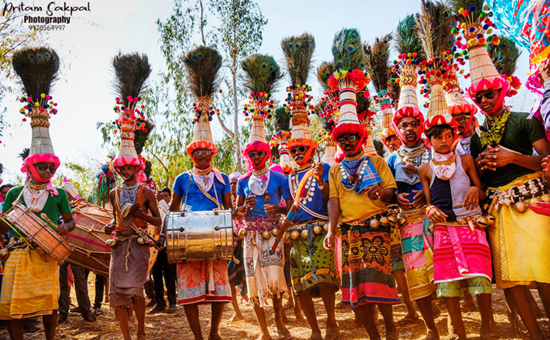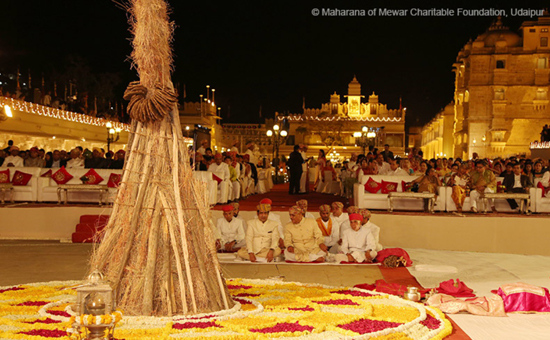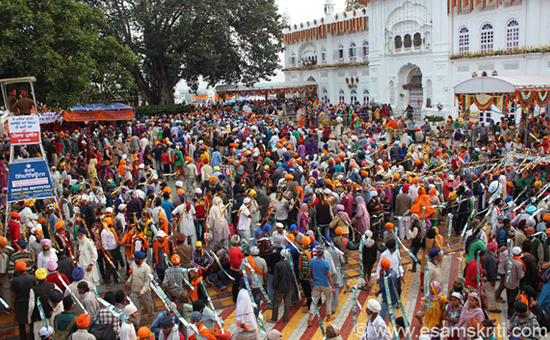- Holi symbolises the element Agni, which is invoked for material welfare and spiritual fulfilment. Also symbolism of Holi in Puranas, how Holis celebrated over 3 days and in Punjab.
Holi symbolises the element Agni, which in its
material aspect, stands for passion and purity, and is invoked for material
welfare and spiritual fulfilment. Holi is called Hutashini, ‘fire-consuming’ as it has esoteric dimensions. Says the Shatapatha Brahman, atmaiva agnih – ‘verily soul is agni’. Bonfires lit on Holi along with the chanting of rakshoghna mantra dissipate negative forces and remind one of the cosmic fire that stimulates human activities.
Agni, with ‘golden teeth’ and ‘flaming hair’, as per its metaphorical description in the Rigveda (V.2.3.; VIII.44.26) brings to mind the kaleidoscopic colours of the human aura, and conveys a philosophy that is meaningful and illuminating.
The Holi festival falling on Phalguna Shukla Purnima, the full moon
day of the lunar month, Phalguna (February-March) exemplifies the symbolic
quality of colours that represent the good and the bad, the sacred and the
profane, the saturnian and the heroic, and many other facets of human
life.
Holi is celebrated for three days.
The first day, called Gheraiya Chaudasha in western India, is observed by gheraiyas who
spray colours and perform group dances to the beating of flat drums, at the
site where bonfire is to be lit on the next day. This is followed by
Holi-proper, called Kamala Holi. It
is marked by splashing of colours, merry-making, friendly meetings, partaking
of gujhia, a sweet dish, bhang-pakoras or bhang- beverages, and the lighting of
fire for oblations and circumambulatory rites.
The third day of Holi is
called Pushpa-dolotsava, due to the
Vaishnava tradition of embellishing a swing with mango leaves, fragrant
flowers, and rocking the well-dressed up image of Shri Krishna, placed in
it with religious fervour.
 Adivasi Holi, Nandurbar district, Maharashtra.
Adivasi Holi, Nandurbar district, Maharashtra.
Holi is simultaneously known as Dhuleti, Dhuli Padvo
or Dhulendi, meaning the dust-throwing day. During the Vedic period, the
peasants made a sacrificial offering of their chief crops and rubbed the ashes
on their body before scattering it in all directions.
The Puranas describe Holi as signifying the victory of
virtue over vice.
 Holi ka Dahan, City Palace Udaipur
Holi ka Dahan, City Palace Udaipur
According to Narada
Purana, the festival is celebrated to commemorate the death of Holika,
sister of king Hiranyakashipu, who attempted to burn her nephew Prahlada.
Another popular legend is that of Putana who wanted to kill the child Krishna by
suckling him on her poison-smeared breasts, but was killed by the divine child.
Classical Sanskrit dramatists, Bhasa and Kalidasa, describe Holi as Kamadeva-anutthana or Madana-utsava.
Holi evokes pictures of revelry and ribaldry, of noisy
groups of men, women and children drenched to the skin with coloured water
dripping from their clothes, of faces all red and green with gulal, of murkha
sammelans, conferences of fools, and of mock fights (called Lattha
holi).
In Punjab, Holi acquires a
masculine form.
 Hola Mohalla celebs at Keshgarhsahib Gurudwara, Anandpur.
Hola Mohalla celebs at Keshgarhsahib Gurudwara, Anandpur.
The first Hola Mohalla was observed in 1700, a year
after the creation of the Khalsa by Guru Gobind Singh, to instil martial spirit
in the Sikhs in their fight against the Mughal tyranny. The festival begins a
few days before Holi at Anandpur Sahib and is marked by religious
congregations, political conferences and guru-ka-langar. Nihangs make a display
of their traditional expertise in martial arts. The Hola Mohalla fair at Dera
Baba Gurbarbhag Singh, Himachal Pradesh, is famous for exorcism and religious
activities.
Holi has inspired poets, musicians, sculptors, painters and holy men through the ages. Its message is: Fill one’s life with colours of love and compassion, and light the fire of spirituality within to exhume lust, anger, egotism and other vices lying buried in the subconscious mind.
Author is a noted educationist, historian and scholar of Hinduism.
To read all
articles by author
This
article was first published in The Tribune and here
eSamskriti.com has obtained permission from The Tribune and the author to share.
Also
read How
Holi is celebrated across India